Is this a mushroom type of food?I brought home about a 5 gallon bucketful of chicken of the woods from our farm today.
You are using an out of date browser. It may not display this or other websites correctly.
You should upgrade or use an alternative browser.
You should upgrade or use an alternative browser.
Mushroom hunting
- Thread starter CurtisB81
- Start date
Chicken of the Woods is an edible mushroom
From what I have read, it is a great tasty mushroom.Chicken of the Woods is an edible mushroom
Fiddleheads. I purchased some from our local grocery one year. They were very good, but they need to be cooked shortly after purchase as they don't store well. They are also a bit expensive to purchase. I would get them in the back woods if I knew what I was looking for, as I don't know if all young ferns taste good when cooked or just a certain variety.
I was very impressed eating some of those earlier this year.
The specific species was Ostrich Fern.
The identifying characteristic is a deep U shaped cross section of the stalk,
like a celery stalk.
Picked a Comb Tooth Mushroom today.
There's still some Black Trumpets and Chanterelles,
but really their season is over.
There's still some Black Trumpets and Chanterelles,
but really their season is over.
South Carolina has been very dry this year, almost no luck at all. We're just now getting a teeny bit of rain.
I see "lobster" mushrooms all the time on my trail running route. I've never tried them as I don'tike mushrooms, but see people hunting for them all the time.
They are bright orange, gnarly shaped and usually as big as my fist, sometimes bigger.
They are bright orange, gnarly shaped and usually as big as my fist, sometimes bigger.
I found a log full of golden oyster mushrooms by the roadside yesterday and grabbed as many as I could carry. Grilled them up in a little olive oil and adobo spice and made fresh tacos with mango avocado tomato cilantro salsa.
They grilled really well, didn’t stick to the grill pan at all. They’re not super flavorful cooked other ways, so this is the way to go.
They grilled really well, didn’t stick to the grill pan at all. They’re not super flavorful cooked other ways, so this is the way to go.
I see "lobster" mushrooms all the time on my trail running route. I've never tried them as I don'tike mushrooms, but see people hunting for them all the time.
They are bright orange, gnarly shaped and usually as big as my fist, sometimes bigger.
That's a tricky one.
The Lobster Mushroom is the result of a fungal infection on another mushroom.
If the original mushroom is nontoxic, like a Russula, then great.
But if you're unable to rule out deadly Amanita as the foundation mushroom,
then ...
Picked a Comb Tooth Mushroom today.
There's still some Black Trumpets and Chanterelles,
but really their season is over.
This is the first time that I've eaten a Tooth Mushroom.
It has a strong conventional mushroom flavor,
unlike Black Trumpets and Chanterelles which have different flavors.
Here's the tooth:
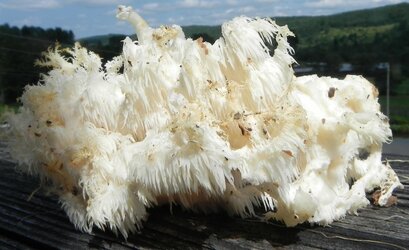
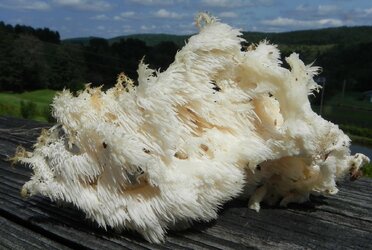
I'll be out mushroom hunting Friday afternoon with friends. Cèpes and chanterelles are what we'll be searching for. A nice way to spend time in the woods.
No cèpes today, but these are a type of chanterelle known as "girolle" here. Later served up in a nice quiche for dinner tonight. First time I've searched for them. A different taste and environmental setting than the slimmer chanterelles we normally search for.
I'm no expert in mushrooms. I just hunt for them with my wife's family and friends, who all know the area well and show me what to search for and where.

I'm no expert in mushrooms. I just hunt for them with my wife's family and friends, who all know the area well and show me what to search for and where.
No cèpes today, but these are a type of chanterelle known as "girolle" here. Later served up in a nice quiche for dinner tonight. First time I've searched for them. A different taste and environmental setting than the slimmer chanterelles we normally search for.
I'm no expert in mushrooms. I just hunt for them with my wife's family and friends, who all know the area well and show me what to search for and where.
View attachment 1711208
When people say "Chanterelle" without specifying which type,
that's the one.
All I know is what folks call them here. "Girolle" on the left and "chanterelle" on the right as depicted in the link below, along with the accompanying descriptive qualifications in French.
Quelle différence entre girolle et chanterelle ? - - https://www.chasseursdechampignons.com/blog/divers/quelle-difference-entre-girolle-et-chanterelle/
Quelle différence entre girolle et chanterelle ? - - https://www.chasseursdechampignons.com/blog/divers/quelle-difference-entre-girolle-et-chanterelle/
Google Translate can't make heads or tails out of that.
Are you new to picking mushrooms and want to know the difference between chanterelle and chanterelle?
We explain the nuance between these two terms in this article!
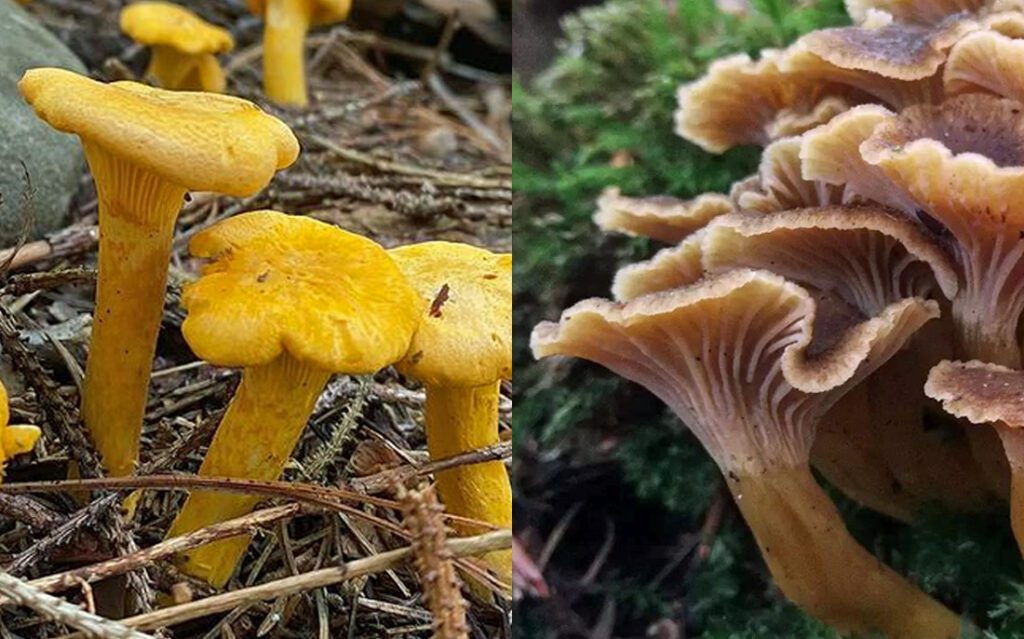 Photo of chanterelle and chanterelle and their differences
Photo of chanterelle and chanterelle and their differences
We will see later that it is in particular a morphological criterion which makes it possible to distinguish between these two families (Cantharellus, craterellus).
In addition, we take this opportunity to tell you about our mushroom cards! Find the best spots for chanterelles and chanterelles thanks to our maps!
Of course, this criterion is not the only one to take into account. And when you are familiar with chanterelles and chanterelles, it is very easy to make the distinction. Let’s see some criteria on the morphological differences between chanterelles and chanterelles:
Partager l'article
FacebookTwitterEmailPinterestLinkedInPartager
Comment nettoyer les girolles ?
SUIVANT
Les différentes girolles
Commentaire
Nom*
Adresse de contact*
Site web
Save my name, email, and website in this browser for the next time I comment.
Discover our mushroom maps
Morel, Chanterelle, Ceps... The best mushroom spots, near you!
Discover our cards!
Copyright © 2023 | mushroomhunters.com

Original text
Quelle différence entre girolle et chanterelle ?
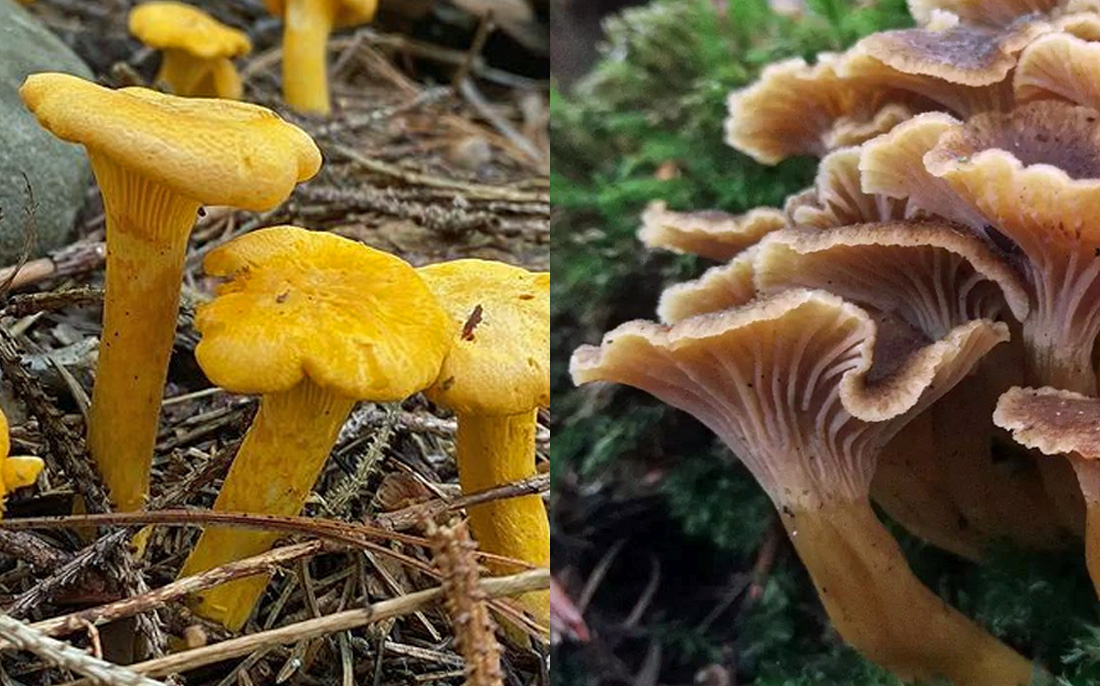
What is the difference between chanterelle and chanterelle?
2022-07-13 Miscellaneous 0Are you new to picking mushrooms and want to know the difference between chanterelle and chanterelle?
We explain the nuance between these two terms in this article!

A difference in species between chanterelle and chanterelle
Chanterelles belong to the genus “Cantharellus” while chanterelles belong to the genus “Craterellus”. This distinction was made thanks to a molecular phylogenetic study which made it possible to distinguish these two families and to offer a clearer classification.We will see later that it is in particular a morphological criterion which makes it possible to distinguish between these two families (Cantharellus, craterellus).
In addition, we take this opportunity to tell you about our mushroom cards! Find the best spots for chanterelles and chanterelles thanks to our maps!
Chanterelle or chanterelle: morphological difference
The foot of the chanterelle and the chanterelle
The most telling distinction and relevant to the phylogenetic study that we have discussed relates to the hollow nature or not of the foot of the fungus. If the stipe (foot) is hollow, then it is the genus craterellus to which the trumpets of death and the chanterelles belong. On the other hand, if the foot is full, then it is rather the cantharellus genus to which chanterelles belong.Of course, this criterion is not the only one to take into account. And when you are familiar with chanterelles and chanterelles, it is very easy to make the distinction. Let’s see some criteria on the morphological differences between chanterelles and chanterelles:
Other Differences Between Chanterelle and Chanterelle
- The chanterelle is fleshy while the chanterelle is thin and hollow.
- The chanterelle has a homogeneous and fairly lively color while the chanterelle is less united and duller.
- The chanterelle often has a small hole in the center of the cap. This is not the case with the chanterelle.
- The chanterelle is often more slender, thinner. The chanterelle is quite massive.
The chanterelle tastes different from the chanterelle
The last criterion that distinguishes the chanterelle from the chanterelle is the taste!- Chanterelle has a taste of yellow fruit. Its taste strangely resembles that of apricot or peach. In addition, its chew is very pleasant. We feel all the fungus under the tooth.
- The chanterelle has a smokier taste. Its taste is more earthy and less sweet than chanterelle. Its chew is very elastic and its appearance more sticky under the tooth.
Find chanterelles and chanterelles with our maps!
Vous souhaitez connaître les meilleurs coins pour trouver des girolles et des chanterelles, dans votre région ? Découvrez nos cartes des champignons ! Redécouvrez votre région et apprenez en plus sur le biotope des champignons comestibles !Partager l'article
FacebookTwitterEmailPinterestLinkedInPartager
- CHAMPIGNON D'AUTOMNE
- CHAMPIGNON D'ÉTÉ
- CHAMPIGNON D'HIVER
- CHAMPIGNON DU PRINTEMPS
- CHAMPIGNONS SAUVAGES
- CHANTERELLE
- GIROLLE
Comment nettoyer les girolles ?
SUIVANT
Les différentes girolles
SOYEZ LE PREMIER À COMMENTER
Poster un Commentaire
Votre adresse de messagerie ne sera pas publiée.Commentaire
Nom*
Adresse de contact*
Site web
Save my name, email, and website in this browser for the next time I comment.
WHERE TO FIND YOUR FAVORITE MUSHROOMS?
-

Winter Mushrooms (December, January, February)
2023-02-01 0 -

Autumn Mushrooms (September, October, November)
2023-01-31 0 -

Summer mushrooms (June, July, August)
2023-01-30 0 -

Scaly Polypore: Finding and Preparing It
2023-01-25 0 -

Influence of rain on mushrooms
2023-01-25 0 -

Spring Mushrooms (March, April, May)
2022-12-05 0 -

Death Trumpet Time
2022-07-25 0 -

How long does a morel mushroom grow?
2022-07-22 0 -

How long does a chanterelle grow?
2022-07-22 0 -

How fast does the chanterelle grow?
2022-07-22 0
Discover our mushroom maps
Morel, Chanterelle, Ceps... The best mushroom spots, near you!
Discover our cards!
Copyright © 2023 | mushroomhunters.com
Original text
Quelle différence entre girolle et chanterelle ?

Quelle différence entre girolle et chanterelle ? -
Vous débutez dans la cueillette des champignons et vous voulez connaître la différence entre la chanterelle et la girolle ? C'est parti !
www-chasseursdechampignons-com.translate.goog
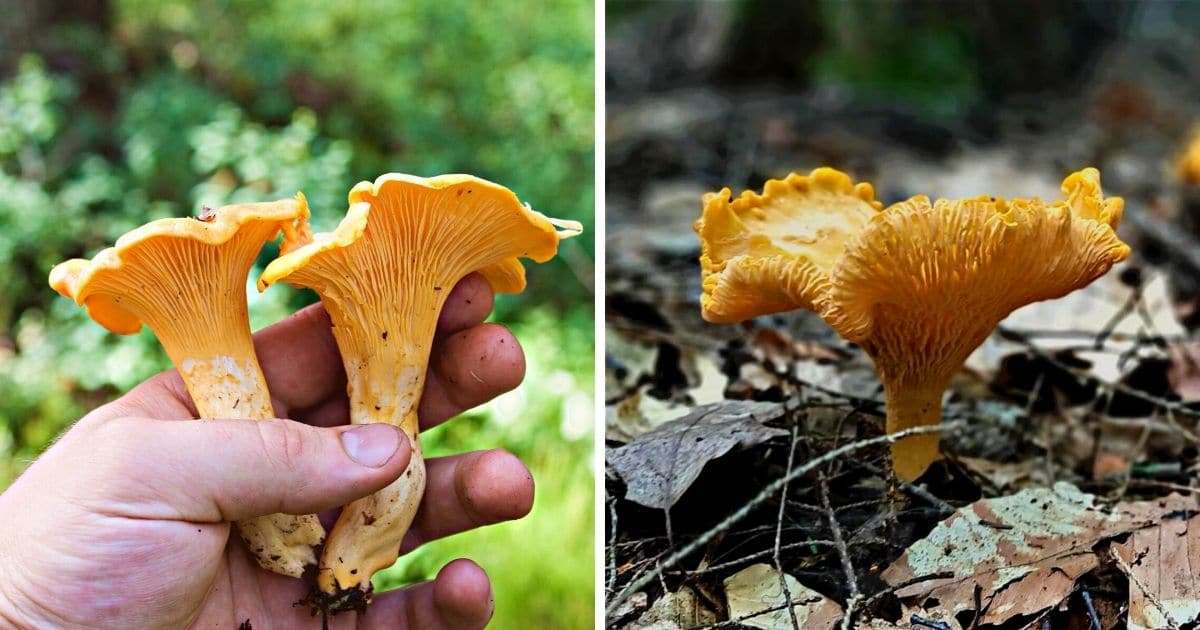
Chanterelle Mushrooms: Identification, Foraging, and Look-Alikes
Proper identification of chanterelle mushrooms is crucial if you want to start harvesting them from the wild. There are poisonous false species; so making a mistake could lead to a miserable intestinal adventure. Yet don't
 www.mushroom-appreciation.com
www.mushroom-appreciation.com
I'm kind of reassured that Google Translate can't make heads or tails of things. Looks like it's down to lonely old me in this case.
In essence, the difference between a girolle and a chanterelle as termed in northeastern France relates to the following from what I've gleaned from the article as linked as well as from a conversation with my brother-in-law this afternoon:
Hope this makes sense. And again, I'm no expert in mushrooms, just learning this all on the fly.
Bottom line from what everyone tells me here is that there are around five types of mushrooms that one cannot mistake. Learn those and stay with those, their environments and climactic conditions. Head out with an experienced local guide following these principles in starting out and stay with them.
In essence, the difference between a girolle and a chanterelle as termed in northeastern France relates to the following from what I've gleaned from the article as linked as well as from a conversation with my brother-in-law this afternoon:
- the girolle has a solid stem whereas the chanterelle's is hollow;
- the girolle is brightly colored yellow whereas the chanterelle's coloration is more earthen;
- the girolle has a more convex head whereas the chanterelle has a sunken dimple in the head;
- the girolle's taste is closer to a burning "mushroom" taste along the lines of a cèpe, with a lingering return, whereas the chanterelle has a taste of "the forest" with no lingering return;
- the girolle is not a mushroom that dries well, as it is fairly dry upon harvest, whereas the chanterelle is one that dries well and is marketed as such in supermarkets around the world.
Hope this makes sense. And again, I'm no expert in mushrooms, just learning this all on the fly.
Bottom line from what everyone tells me here is that there are around five types of mushrooms that one cannot mistake. Learn those and stay with those, their environments and climactic conditions. Head out with an experienced local guide following these principles in starting out and stay with them.
Last edited:
I saw some Popinki in the woods today.
That's Honey Mushroom in parts of the USA where they don't know that word.
That's Honey Mushroom in parts of the USA where they don't know that word.
Similar threads
- Replies
- 0
- Views
- 204
- Replies
- 14
- Views
- 407
- Replies
- 21
- Views
- 1K


